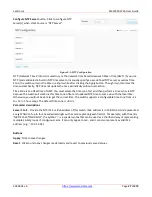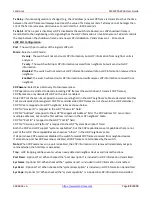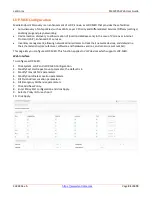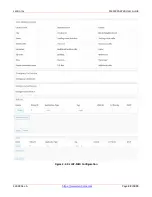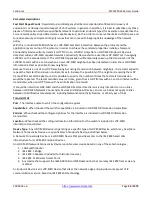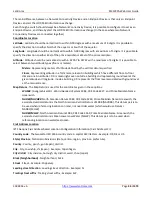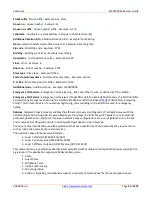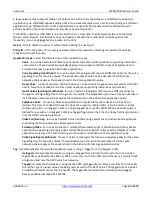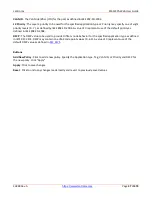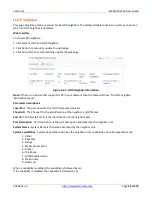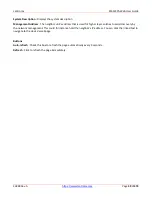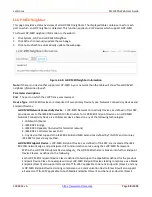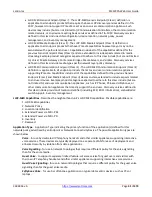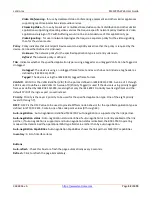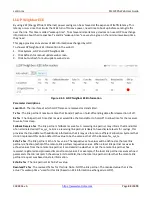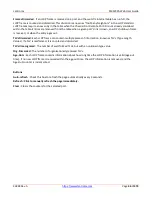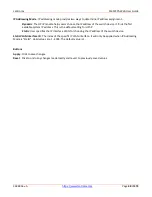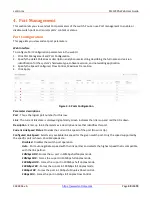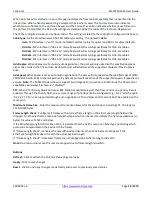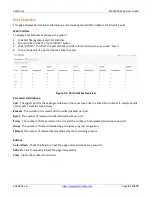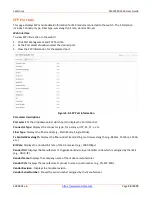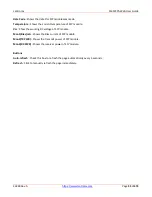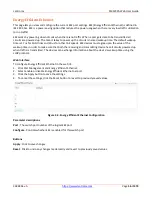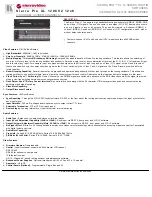
Lantronix
SM12XPA Web User Guide
33848 Rev. A
Page
41
of
473
•
LLDP-MED Generic Endpoint (Class I) : The LLDP-MED Generic Endpoint (Class I) definition is
applicable to all endpoint products that require the base LLDP discovery services defined in TIA-
1057, however do not support IP media or act as an end-user communication appliance. Such
devices may include (but are not limited to) IP Communication Controllers, other communication
related servers, or any device requiring basic services as defined in TIA-1057. Discovery services
defined in this class include LAN configuration, device location, network policy, power
management, and inventory management.
•
LLDP-MED Media Endpoint (Class II) : The LLDP-MED Media Endpoint (Class II) definition is
applicable to all endpoint products that have IP media capabilities however may or may not be
associated with a particular end user. Capabilities include all of the capabilities defined for the
previous Generic Endpoint Class (Class I) and are extended to include aspects related to media
streaming. Example product categories expected to adhere to this class include (but are not limited
to) Voice / Media Gateways, Conference Bridges, Media Servers, and similar. Discovery services
defined in this class include media-type-specific network layer policy discovery.
•
LLDP-MED Communication Endpoint (Class III) : The LLDP-MED Communication Endpoint (Class III)
definition is applicable to all endpoint products that act as end user communication appliances
supporting IP media. Capabilities include all of the capabilities defined for the previous Generic
Endpoint (Class I) and Media Endpoint (Class II) classes and are extended to include aspects related
to end user devices. Example product categories expected to adhere to this class include (but are
not limited to) end user communication appliances, such as IP Phones, PC-based softphones, or
other communication appliances that directly support the end user. Discovery services defined in
this class include provision of location identifier (including ECS / E911 information), embedded L2
switch support, inventory management.
LLDP-MED Capabilities
: Describes the neighborhood unit's LLDP-MED capabilities. Possible capabilities are:
1. LLDP-MED capabilities
2. Network Policy
3. Location Identification
4. Extended Power via MDI - PSE
5. Extended Power via MDI - PD
6. Inventory
7. Reserved
Application Type
: Application Type indicating the primary function of the application(s) defined for this
network policy, advertised by an Endpoint or Network Connectivity Device. The possible application types are
shown below.
Voice
- for use by dedicated IP Telephony handsets and other similar appliances supporting interactive
voice services. These devices are typically deployed on a separate VLAN for ease of deployment and
enhanced security by isolation from data applications.
Voice Signalling
- for use in network topologies that require a different policy for the voice signalling
than for the voice media.
Guest Voice
- to support a separate limited feature-set voice service for guest users and visitors with
their own IP Telephony handsets and other similar appliances supporting interactive voice services.
Guest Voice Signalling
- for use in network topologies that require a different policy for the guest voice
signalling than for the guest voice media.
Softphone Voice
- for use by softphone applications on typical data centric devices, such as PCs or
laptops.

